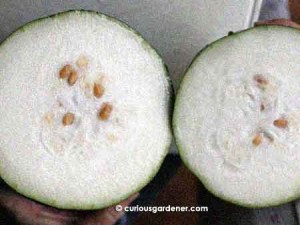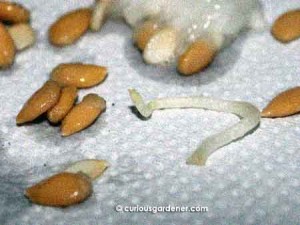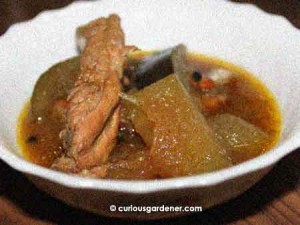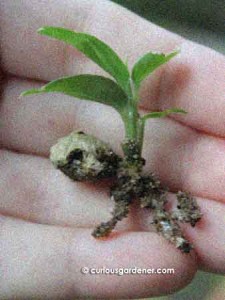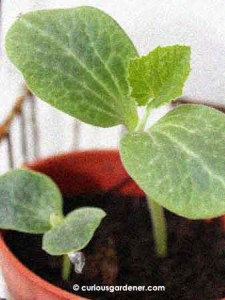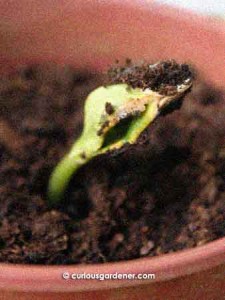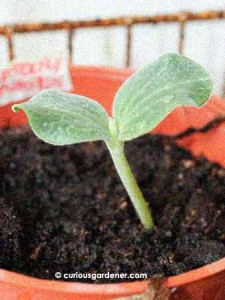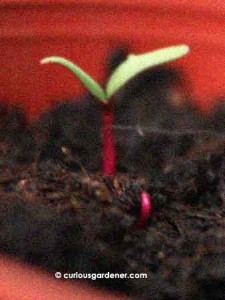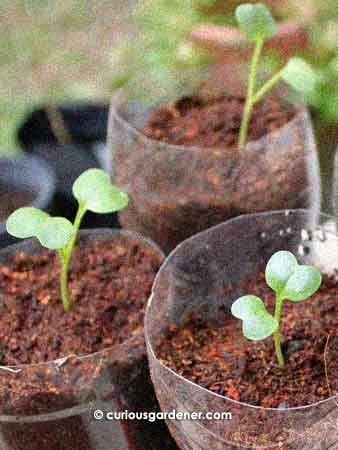It’s been about a month since we harvested our first winter melon fruit, and the poor fruit had to bear the indignity of being a conversation piece ever since. I wasn’t too concerned as I’d heard somewhere that melons and pumpkins can last for six and more months thanks to their thick skins that provide the best “packaging” since they were created by Mother Nature herself. However, rapping gently on the skin of the fruit this week, I heard a new hollow sound, and decided it was time to introduce the winter melon to the cooking pot.
Cutting it open, we found it still nice and juicy. Not so distinct, but still visible, were the six segments at the middle, with lots of seeds embedded in the soft, spongy pith. That was removed prior to cooking, and I naturally started sorting through the seeds for the biggest, fattest seeds to store. It’s an automatic reaction and I make no excuses for it.
What surprised me was finding a single sprout in the midst of all the seeds! It didn’t have leaves formed yet, nor developed roots, but it was definitely a stem of a sprout!
What’s more, I noticed that a few of the seeds had also cracked open and had something pale green poking out. Some of them were simply the seeds within the seed coat, but a couple were…

I can't believe that these seeds started germinating within the month-old harvested winter melon, but they did!
…little seed leaves slowly unfurling!
What this leads me to conclude is, if you keep a winter melon plucked ripe from the vine long enough, the seeds inside the fruit will start germinating on their own. So, while we’re still waiting for our vine to decide whether or not it’s going to grow big again…

Our winter melon plant has been cut back to just this, and the leaves are coming very slowly. Fertilizer and volcanic soil has been added, and we're waiting to see how the plant responds.
…we can start a new generation growing, just in case.
Oh yes, and the introduction of the winter melon to the cooking pot went very, very well! 8)
© 2012 curiousgardener.com All rights reserved.

